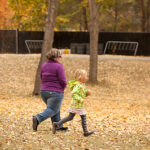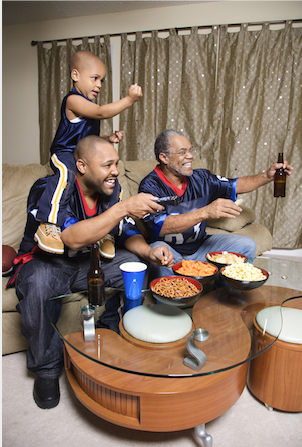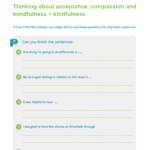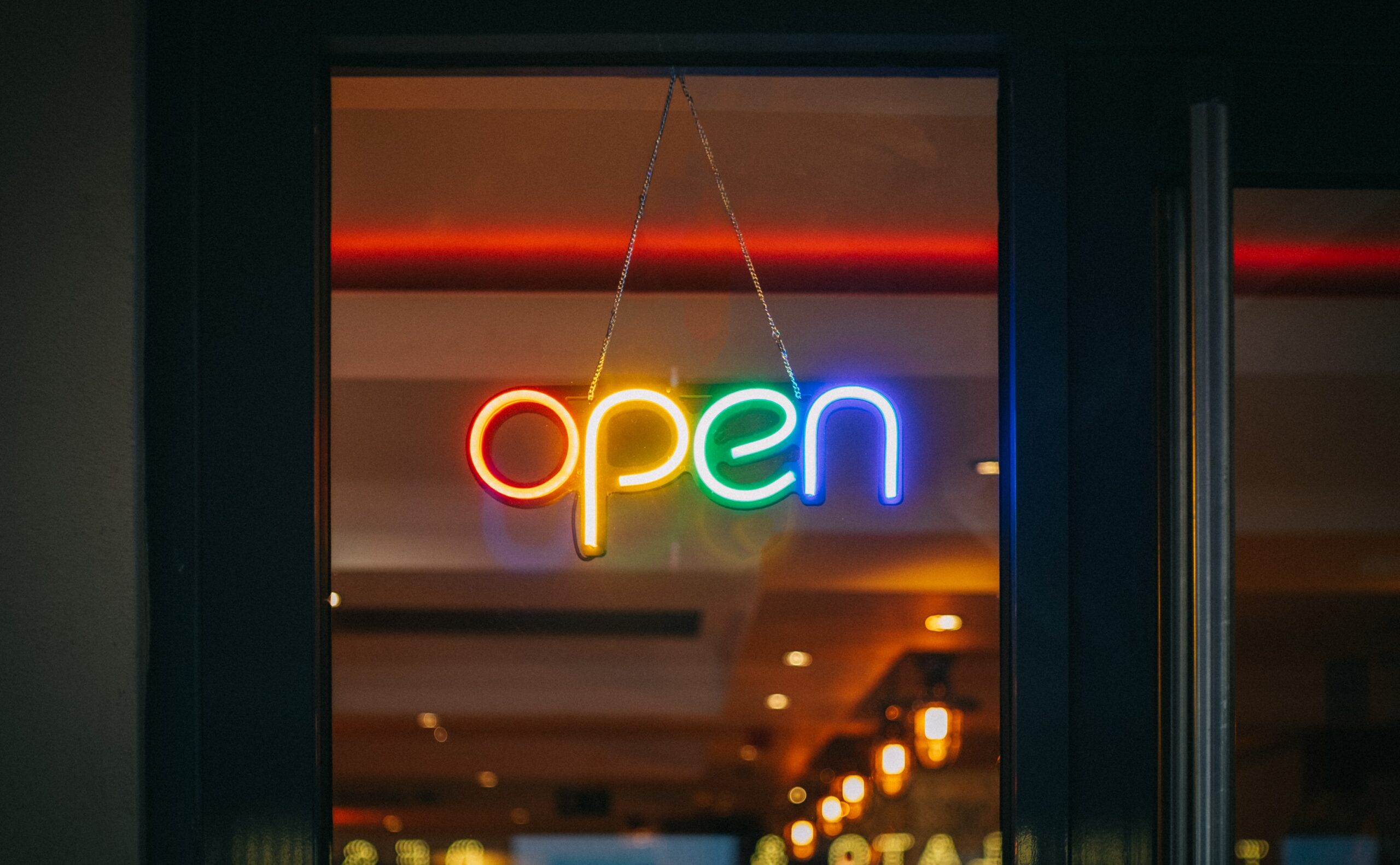Well Now Explorer January 2021
Lesson Three
Live zoom session Mondays 07:00 – 8.30pm. https://us02web.zoom.us/j/85804373584
Meeting ID: 858 0437 3584 Passcode: 078019
Activity One
Summary of ideas so far ~
- WOLAR – you are always worthy of love and respect.
- When we are distressed by our eating being kind to ourselves can help (kindful eating cycle).

- Strengthening our body-mind communication helps us make sense of what’s going and it helps us navigate strong emotions. In turn this can help us feel in control of our eating. Practising self-compassion, body awareness, deep connection and having a comfort menu are all useful here.
- The hunger-o-meter can help us make links between what’s happening in our body and how that influences our impulse to eat.
- Is there something else that stood out for you?
Image from EASO
 Activity Two
Activity Two
Exploring Ideas About Eating
It can be tricky knowing whether we want to eat
- mainly for emotional reasons (eg. soothing, distracting, numbing, feeling)
- mainly from physical hunger for food
- or mainly for other reasons
And it can be tricky to know where these overlap. Any reason is fine. There is no right or wrong reason to eat. Eating to cope is just as valid as eating because you have an appetite for lunch. However, making sense of our eating can help us alter habits that cause us pain or confusion.
Figuring out whether we are mainly hungry for food, or mainly eating for emotional reasons or hungry for something else can be really useful. The “something else” might be a hug, fresh air, a nap, water, emotional expression, comfort, etc. We’ll come back to this in a moment.
“Other reasons” we eat can be because we confuse our body signals and interpret sensations as hunger when in fact they arise due to something else.
Thirst is something that is often confused with being hungry for food. What else comes to mind? Here’s a list of possibilities ~ You’re Sensational .
Some of these might seem surprising – when we are very disconnected from our body it may be hard to read what’s going on in quite dramatic ways.
Activity Three
Could Connected Eating Be Useful For You?
This section is in two parts. This first part focuses on personal eating. The second part explores how eating theories impact social justice. Stop when you’ve got enough to digest! You can always come back for more later if that feels useful.
** ** ** ** ** ** ** ** **
Part One

In these images, is anyone at ease with food? Is anyone eating mainly to cope with emotions? Is anyone’s eating influenced by rules they are following about what they should and shouldn’t eat?
How do you ‘know’? What is it that communicates people’s relationship with food?
What do you pay attention to when making food choices? Do you use any rules or principles to guide you? Take some time exploring how you approach eating and food selection. What matters to you? When do you feel safe, in control ? What makes you feel unsafe? What re you aiming for? How do you talk to yourself?
When you’re ready, take a look at the following images ~




Do people seem to be at ease with food? Perhaps you follow a particular approach to eating. Are the people who seem at peace with food eating in line with the guidance of this approach?
Were there any surprises? Or confusions? What can you learn from this? What does it mean for any food rules you follow?
Here’s some journaling prompts: ‘Being at peace with food for me means …..
‘People with a healthy relationship with food eat according to …..
*** *** *** *** *** ***
You might want to stop here and stay with your own reflections. Alternatively, here’s some reading on background theory.
The approach I use in Well Now is called connected eating. This recognises
- that food and eating serve many roles and meet many needs
- we get information from our body, mind, and circumstances
- you are worthy of love and respect, you always were, and always will be
Connected eating assumes there are many ways of knowing which are inter-linked. What we think and what we feel and what we value in a specific situation at that time is important knowledge that is true for us .
Connected eating is interested in combining knowledge from body-brain-context. It encourages us to value what we think and what we feel and be curious about what this means.
This makes it distinct from approaches that separate out body-brain, and often totally ignore context. For example, dieting wants people to outwit their hunger, and pays no attention to what is going on in people’s lives or bodies. Rules-based eating elevates the mind as in ‘trust the science, I’m an expert’. Some approaches encourage an over reliance on separated body signals as in ‘trust your body’. Some approaches make social eating hard.
Our language presumes that body signals and our brain are largely separate. But in fact they are connected, what we believe shapes what we feel. Body signals are not innate pointers to inner wisdom! They are shaped by our life experience. That’s why some people eat foods that people from different cultures would find odd or gross. The body signals that determine our tastes, for instance, are strongly shaped by our cultural immersion.
Knowing that individual circumstances shape our body signals can help us make sense of comfort/coping eating, and trauma responses.

A key point is that knowledge from body-brain-context is inter-connected. We might investigate them one by one and talk about them as if they are distinct, but in fact they are never actually completely separate.
Hence, it can be helpful to talk about eating for ‘mainly physical reasons’ or eating for ‘mainly emotional reasons’ to remind ourselves of this from time to time. When we describe comfort or coping eating as ’emotional eating’ it implies that emotions aren’t always circling around food!
Part Two – How We Talk About Personal Healing Impacts Collective Liberation
Connected eating supports personal healing and it supports collective liberation.
How are these linked?
Well, valuing knowledge from all sources disrupts binary thinking. Whereas binary thinking respects Reason and Rationality only, using many ways of knowing (as in connected eating) respects knowledge from bodies, collective emotions, the erotic, the wild, and other non-rational sources. Disrupting binary thinking disrupts the mindset behind racism, ableism, size bias, gender rigidity, and other stereotyping.
Connected eating values body signals but it doesn’t treat them as uncontaminated ‘pure’ truth. This means that we can have strong feelings that feel ‘true’ and still question them. For example, instead of believing the body signal of shame, or disgust, or fear of Black or fat or gender expansive bodies is ‘true’ we can be curious about our response and add in what we know intellectually and from our life so far.
Knowing that our body signals are shaped by culture, upbringing, and trauma helps us figure out new ways to address oppression and understand our biases. It helps us understand that our feelings are real, and they are also in part a social construct.
This way of building knowledge reminds us that self-society are in flow and shape each other. By assuming our circumstances matter, it also helps us realise that what we feel and like and think is strongly shaped by our wider social context. This is why we don’t all eat the same things for breakfast the world over!
(Here’s a blog in case you want to read more about the links between eating narratives and social action to end racism).
Activity Four
Summaries to Download
Activity Five
Understanding Trauma and Eating
- Now is a great time to check in with yourself and find out if you need a break . . .a hot drink? . . . time off screen? . . .a big yawn with an arm stretch?
2. There are many things that can stop us from being at ease around food. What these have in common is some sort of body-mind-society disconnect.
An example of a disconnect between body and mind is we plan to do something but our body impulses lead us to do something else instead.
There are many reasons for disconnect. One of these is trauma. There are lots of ways we can strengthen body-mind-society disconnect by understanding trauma. These activities can be helpful whatever the source of disconnect.

Here’s a blog on how trauma impacts eating and ideas that might help you
Photo of mandala by Mayank Baranwal on Unsplash. Photo of hot cross buns by Jasmine Waheed Unsplash.
Activity Six
 Joining the Threads
Joining the Threads
The Canadian poet Gwendolyn McEwan wrote the great line ~ “there is that hunger which is not for food.”
I love this poem by May Sarton where she talks of “ripening/ To a greater ease,/ Learning to accept/ That all hungers cannot be fed,. . . “
Hunger has lots of associations. What surfaced for you? If you want to stay with the theme a while longer, here’s a few exploratory questions to help you piece together what you’re learning, and maybe keep a record of what you think and feel (your thoughts and felts).

Activity Seven
Nurturing Body Awareness
Have you tried any of the body awareness activities? How did it go?
Here’s some more ideas using a slightly different approach. If you’ve already found something that works it’s fine to stick with that. I’m making suggestions so you have a menu to select from ~ not a list of chores to try and get through!
Some simple ideas for body awareness – click for download


Activity Eight
A Reminder to Go Gently
Remember, some of these questions might land deeply and feel unsettling. It’s fine to be unsettled – we need this for change to happen. It’s also true that there’s a point at which we can be too unsettled to engage with learning, which clearly isn’t helpful. We need a steady place in ourselves to return to (the body awareness exercises will help with this) as we adjust to new ways of being with food, emotions, knowledge and so on. 
The most important thing for the learning and healing that’s happening here is that you explore your feelings and beliefs. This means being able to engage, and this means pacing yourself. Don’t worry about doing everything that’s suggested, amount doesn’t matter. It’s more important that you can be present with whatever you do, even for a short time and even for a tiny amount.
Last question, what are you looking forward to? Have you got any treats planned? If not, now is a great time to put something in your diary!
See you soon ~
